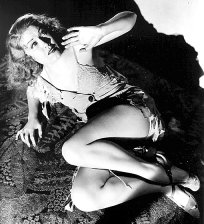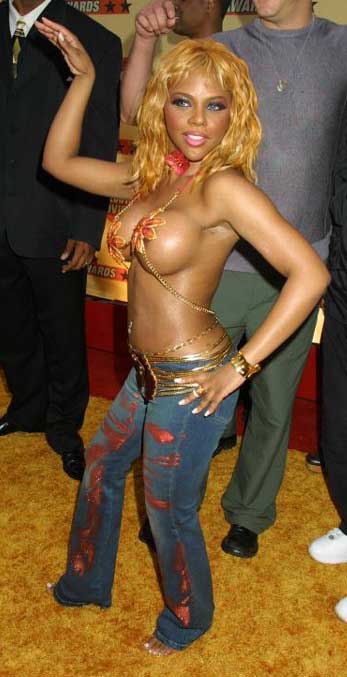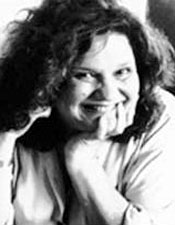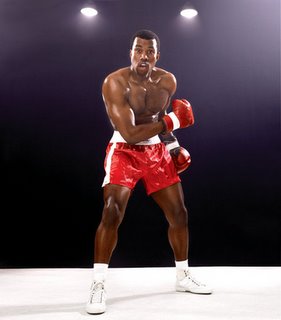
For a long time I've wanted to write something about what I see as the American obsession with
blond(e)s and
blondeness, a fixation this country's media actively inculcate into our national and individual consciousnesses (I never tire of
Alexander Kluge's and
Oskar Negt's conceptual term, "industrialize"), while also exporting to all corners of the world through Hollywood and TV shows. But in the past, when I've begun, I just can't muster the interest or stamina to finish it, because it seems there's just so much to say; untangling the knot of social, political and cultural (white) American imaginaries (in
Edouard Glissant's broader sense of the term, not
Jacques Lacan's) and their related discourses and and discursive practices and productions; the history of racial representations, particularly racial iconography and imagery, both before and after the advent of photography, then cinema and later television; the semiology, economy and il/logic of white supremacy; corporate America's (including Hollywood and the visual media's) marketing and commodification systems, and so on, would require more brainpower and energy than I have at the moment. So I'm going to post two articles by others (and link to one I linked to a while ago). But, let me say first:

What initially provoked the unfinished entries were several things: first of all, whenever I teach my introductory fiction classes, one of the things I notice when I have my students create a fictional character that they'll carry through several different subsequent narrative exercises is how often they make the characters "blond(e)." I find that this tends to be the case for most (but not all of) my White students, as well as my Asian-American students (except the South Asian-American female students), but fairly rare for my African-American and Latino students (I actually have taught very few Latino students). (It also is less of an issue with my honors-level student writers, who have almost to a person written complex texts that challenge and push nearly every fictional convention, from the level of language itself to the thematics and structure.) Most of my students, at least if I'm recollecting right, are from a range of European ethnicities, with varying shades of brown, but while the authors I assign describe a range of characters and physical types--be it
James Joyce,
Anton Chekhov,
Junot Díaz,
Toni Cade Bambara, or
Jhumpa Lahiri--it seems the interior ideation is (a) blond(e). Or, if my student writers are blond(e)s and I require everyone to create a character with different
physical characteristics from themselves, inevitably the blond(e) students will create another central or important character who's (a) blond(e). Usually the students will make the most desired or attractive or "beautiful" characters "blond(e)." Blond(e)ness, in conjunction with thinness, wealth, and other markers of social and cultural capital becomes a signifyer for desirability and social and aesthetic importance. This is especially the case with female characters, though blond male characters also predominate. It also turns out that many of my graduate students also are writing about blond(e)s as well. In the new quarter, of two stories I've read, one had a protagonist who was, during her college years and at the height of her attractiveness...blonde.
I encourage my students to write what they want to write, and I want to make it clear that I'm not casting aspersions on or criticizing their choices. But over the years I've begun to note this blond preponderance, which I see as a reflection and symptom of larger societal issues at play.

(Sometimes things go overboard. A few years ago I had one young man who wrote a story in which a young blonde woman was threatened by a Black male, and was saved a by a blond male "angel"-type character, who emasculated the Black male character in response. That led to a very serious but civil class discussion about racial depictions, stereotypes, violence in narratives, the need to take responsibility for one's work, and so on. A few of the students were horrified to silence by the text, several glossed right over the racial aspects, and the author never returned to the class after that.) Sometimes the only characteristics in terms of physical descriptions of characters, regardless of attractiveness, desirability or not, will be that the character is "blond(e)," although in the last few years I've had several students write about "red-heads" (they usually have been "redheads"). In counterpoint, several years ago I had a few stories in which the "unattractive" characters were described as having "dark" hair or were fat. In every introductory and graduate fiction class I discuss stereotypes (and archetypes, as this is a standard element of understanding characterization), and in my sociology of writing class last year we broached this question of the "blond" imaginary (again, think Glissant, not Lacan); most of the students (fine writers all of them) who were prone to doing so admitted that they hadn't even thought about it, or weren't aware of the recourse to "blond(e)s" and "blond(e)ness."

Then, last spring, I had a White female graduate fiction student come to my office to meet with me. I had never taught or worked with this person before, but as is the case with our graduate program in creative writing, which is fairly new, I and other professors supervise graduate students in our genre area (mine is fiction) for an independent study or for thesis work. We agreed that we would meet, she'd bring me her work, and we'd figure out if I could work with her. This particular student came to the office, and after expressing momentary surprsise when she saw me, she took and seat and we began chatting. The conversation engaged us both, I thought, though after our discussion I wasn't convinced that I'd be right to work with her, but I said that I'd read her submissions through. When we reached a pause toward the end of the meeting, she began to tell me that she was surprised when I'd opened the door. Given my name, she said, she'd expected me to be "tall" and "blond." I think she may also have thought I'd be older, but I've blocked that out. I was a bit taken aback--years ago I'd had an older Black woman at a scholarship committee tell me that she thought, given where I was enrolled for my undergraduate education, that I'd be "taller"--???--and I imagine that some students may be surprised to have a Black fiction or literary studies professor walk into the room if they've never studied with me, but I've never had anyone voice this, let alone say they expected me to be "blond." To my face, no less. I responded with a joke about being tall (well, I'm almost 6' but the Midwest
is the land of giants), and with a short comment about how in fact a former coworker, a gregarious Italian-Irish-American, had gone to Ireland years ago and when he returned, eagerly told me he met my close relative drinking in a pub--the famous Irish writer and author of
The River,
John Keane, after which this student scrunched up her face, apparently in confusion. At this point, I rose and she realized it was time to leave.

Of course I'm not conflating these teaching experiences with the America as a whole, but I do see great resonances between the students' blond(e) imaginary, so to speak, and my third prompt, which is the persistence in the mainstream media and entertainment industry of the obsession with blondes. I've already written about the
Natalee Holloway fixation and the her function as a sociopsychological victim-prosthesis, and I need not catalogue the numerous examples, large and small, with which we're bombarded with images of blondness as equalling or approximating beauty, and serving as a proxy for idealized Whiteness. One could talk even about blondness's irruptions in Black American cultural production; for example, as a signifier of a kind of mute idealized femininity in an all-Black film like
Set It Off, where the femme girlfriend of
Queen Latifah's butch never speaks and sports a blond close-cropped cut; or the blondness of
Beyoncé, who after she broke away from
Destiny's Child kept getting blonder and blonder, with even her skin tone blanched out in some advertisements; or any number of hiphop and R&B stars who went "blond" for a spell or for good, like
Li'l Kim,
Mary J. Blige,
Eve, and so on; or
J-Lo, who had short, dark tresses when on
In Living Color, then long, lightened (but not blonde, if I'm remember correctly) hair during her breakout hit period and her relationships with
P-Diddy and
Chris Judd, but eventually became a blonde (often photographed with matte, very light foundation) during her superstar moment with
Ben Affleck (as Bennifer or J-Fleck), before she returned to a more ethnically marked appearance after hooking up with singer and fellow Boricua
Marc Anthony. Et cetera.

I know little about the history of blondness and America's obssession with and iconographic emphasis on female blondes, though I know there are books out there on this topic that I should check out. Obviously it goes quite far back, at least in cinematic terms, to early silent-film stars like
Lillian Gish, who if I can recall correctly (and I'm quite bad at recollecting specifics of movies I haven't seen in years) in
Birth of a Nation (1915) is the blonde Northern woman (Elsie Stoneman?) who is rescued from the licentious lieutenant governor, Silas Lynch and the rampaging Black Reconstructionists (and their Northern White "carpetbagger" and "radical" allies) in the film, by no less than the Ku Klux Klan. To take another notorious example, there's the iconography of the original
King Kong, which I watched on Turner Classic Movies down in DR! In it the blonde, played by
Fay Wray, is to be sacrified by the Black "savages" of the island to the monstrous super-gorilla, Kong, and...well, no need to go there. I hadn't realized, however, until reading a
Village Voice review, that it was Hitler's favorite film and was retitled
King Kong and the White Woman when it played during the Nazi period. (I won't even get into Nazi and Nazi-related propaganda.) Hollywood's emphasis on blonde female stars has been fairly consistent, it appears, especially since
Greta Garbo, with the apogees perhaps being
Jean Harlow,
Marlene Dietrich,
Ingrid Bergman,
Carol Lombard, Joan Blondell, Marilyn Monroe,
Judy Holliday,
Grace Kelly,
Lana Turner, and
Doris Day, though there have been some major brunettes, red-heads and dark-haired White female stars (
Judy Garland,
Bette Davis,
Lauren Bacall, Joan Crawford, Hedy Lamarr, Katherine Hepburn,
Elizabeth Taylor,
Debby Reynolds,
Audrey Hepburn, etc.), but it strikes me that in recent years Hollywood has returned to its blonde female fixation with a vengeance. In terms of male stars, it seems that many of the major male stars from the silent era on through the 1980s weren't blondes, with some exceptions (
Joel McCrea, then later
James Dean, Tab Hunter and
Troy Donahue in the teen hearthrob films of the 1950s), and Hollywood has never pushed male blondness as relentlessly as female blondness. Wasn't the ideal even "tall, (not too) dark and handsome?" (
Gary Cooper,
Cary Grant,
Gregory Peck,
John Gavin, etc.) But even the new
James Bond--a role defined by the swarthy
Sean Connery, and subsequent brunets
Roger Moore (unspeakably dull, that one) and
Pierce Brosnan--is now--you got it, a blond! (I can't remember his name.) But TV it seems has been a bit different, especially since the late 1970s and early 1980s, especially once the conservative political triumphs under
Ronald Reagan took hold, with blond males abounding. I don't have stats, though, and this is just my impression. (I should add that I realize that the contemporary blond(e) obsession is of a piece with other larger cultural movements, and I am not forgetting some of the perceptive arguments of colleagues like
Dwight McBride, in his collection
Why I Hate Abercrombie & Fitch.)

Anyways, having written all of that, let me now link to the article I came across in
Yahoo! News's opinion section, by
Sheryl McCarthy, from
USA Today. It's entitled "'
Blonde is beautiful' mystique," and raises some interesting points, connecting the blond(e) fixation to the larger issues of racism, colorism, classism, and so on. A quote:
"Is it politically correct for us to see King Kong?" a friend joked when the latest version of the movie classic opened. A movie clip that shows Kong staring mesmerized at the fair Ann Darrow, played by Naomi Watts, caused me some uneasiness because it's hard not to see the subliminal racism in a story about a big black beast falling tragically in love with a pale blonde beauty.
But lured by reviews touting the special effects and the dramatic story, I went to see the movie anyway. While it certainly has racial overtones, I was more disturbed by its gender message: that fair-skinned blondeness is the essence of female beauty, so powerful an aphrodisiac that it can tame a savage beast.
King Kong is just the latest ripple in a cultural tidal wave of celebrations of a certain kind of Caucasian beauty. Pick up a newspaper or magazine, or watch the entertainment shows on television, and you're bombarded with a profusion of blondes: Paris, the Nicoles (Ritchie and Kidman), Scarlett, Charlize, Ashlee, Gwyneth, Mary-Kate and Ashley, to name a few. Even the African-American hottie of the moment, Beyonce, has golden skin and flowing blonde hair, while Halle Berry, the African-American actress most celebrated for her beauty, is fair with white features. Even in movies with predominantly black casts, the female objects of desire are consistently fairer than their male counterparts.
As I said, she goes on to make related points that I think are pretty interesting. What do you brilliant readers think?

An interesting counterpoint involves a psychological study in
Australia, which showed that "mixed" raced people were rated more "beautiful" than ethnically or racially pure (though no such category exists, of course) people. As
Deborah Smith, the science editor at the
Sydney Morning Herald writes in "
She's got the look, and science can prove it": "Caucasians and Asians rated average Eurasian faces as more attractive than average faces of either race. They also judged Eurasian faces to be healthier, giving credence to theory that beauty is not solely determined by culture and the media, but has biological origins." The article continues, with a healthy does of orientalism (unironically):
Ben Lilley, the head of Sydney ad agency Smart, said advertisers risked appearing old-fashioned if their models were not exotic-looking. He said young Australians tended to have friends from many different racial backgrounds and celebrated this diversity. "So we try very hard to ensure we use an interesting cross-section of youth, rather than the Anglo-Saxon Australian stereotype."
Dominique Longheon, the general manager of Chic Model Management in Sydney, said blonde models no longer dominated the Asian model market, particularly in Hong Kong and Singapore. "Once, every ad had your typical Swedish girl, but the flavour for the past two years has been Eurasian," he said.
The article goes on to make the claim that though the health of the Eurasian people used in the study wasn't known, "there is evidence that having parents from very different ancestries may reduce the chances of inheriting two copies of harmful genetic mutations." Yet a New York Times article a while back noted that many African-Americans had inherited from their European ancestors a gene, long common in parts of Europe and thus , that might lead to heart attacks.
One immediate question I had about this concerned "mixed" race people in this hemisphere--most Latinos (Mestizos, Afrolatinos, etc.), most African-Americans (who have African, and varying degrees of European and Native American ancestry), mixed-raced "White" people (who have some Native American, or submerged African ancestry), self-described "mixed" race people (including Latinos, "biracials, etc.), Eurasians/Amerasians, mixed African-South Asian people from Trinidad and Guyana, and so on. How applicable would such a study be here, for example, would the same sort of outcome occur, and what might the role of cultural and aesthetic biases play? What other aesthetic criteria would come into play? How overtly "mixed" would a person have to look to fit the criteria? Would people from a society (the USA, let's say) relentlessly weaned on a particular physical-aesthetic ideal, like blond(e)ness, make the same or even similar choices? Just wondering.







 "I saw him for the first time in December 1985, at a lecture he was giving. I found him attractive, but one thing bothered me: he was wearing an ugly tie. The next day I anonymously sent him a thin brown tie. Later, I sent him in a restaurant; he was wearing it. Unfortunately, it clashed with his shirt. I was then that I decided to take on the task of dressing him from head to toe: I would send him one article of clothing every year at Christmas. In 1986, he received a pair of silk grey socks; in 1987, a black alpaca sweater; in 1988, a white shirt; in 1989, a pair of gold-plated cufflinks; in 1990, a pair of boxer shorts with a Christmas-tree pattern; nothing in 1991; and in 1992, a pair of grey trousers. Someday, when he is fully dressed by me, I would like to be introduced to him."
"I saw him for the first time in December 1985, at a lecture he was giving. I found him attractive, but one thing bothered me: he was wearing an ugly tie. The next day I anonymously sent him a thin brown tie. Later, I sent him in a restaurant; he was wearing it. Unfortunately, it clashed with his shirt. I was then that I decided to take on the task of dressing him from head to toe: I would send him one article of clothing every year at Christmas. In 1986, he received a pair of silk grey socks; in 1987, a black alpaca sweater; in 1988, a white shirt; in 1989, a pair of gold-plated cufflinks; in 1990, a pair of boxer shorts with a Christmas-tree pattern; nothing in 1991; and in 1992, a pair of grey trousers. Someday, when he is fully dressed by me, I would like to be introduced to him." Yesterday, after a full day of student conferences, I hopped in my car and drove halfway down Chitown to
Yesterday, after a full day of student conferences, I hopped in my car and drove halfway down Chitown to 
 Yesterday I had the pleasure of lunch with
Yesterday I had the pleasure of lunch with  Stranger than fiction: if you thought the
Stranger than fiction: if you thought the  Yet another book I plan to add to my booklist is poet Edward Field's
Yet another book I plan to add to my booklist is poet Edward Field's  Today I got word via email that
Today I got word via email that  I also recently learned via an email from
I also recently learned via an email from 



























